The Milky Way
I can't wait for the day somebody (or something) asks me where I'm from and I can respond with The Milky Way Galaxy. "Where's that?", they'll undoubtedly say and I'll have to share my Universal Quantum Co-ordinates (probably telepathically.) They will turn to their cloned buddy / machined friend / bio-engineered, synthetic lifeform who will respond," isn't that where the Vondazlians, Magravenoids & Amblatiphers live? we've done business with the Vondazlians." They make very nice genetically modified, all purpose organs don't they ?" ? I'll say, I don't know really, we're quite primitive beings and have only recently mastered the art of hyperflight. Although I will be able to say with a fair amount of confidence that there are 34,863,993,101 civilisations in our comfy old Grand Spiral Design Galaxy, which means about 1/6th of all the stars in it have at least some conscious beings orbiting them. (my guess). They will chuckle, Ha-blip-ha-zoup-ha Andromeda is on a collision course with you in the next few billion years. That always causes an administrative nightmare when two old Galaxies collide. A lot of dlobta-blockwork (which is just hyper-stacked, quantum entangled, post blockchain type paperwork, apparently a Galactic standard.) Ok, enough of the Hitchhikers inspired musings. Let's get down to some real mind boggling facts about our beautiful Island home. This post will be illustrated with images and facts, courtesy of the fantastic ESO & NASA archives and will also end on some equally fantastical musings.

The Pinwheel Galaxy pictured above
looks remarkably similar to our own spiral galaxy with it's tantalising arms, (according to the boffins). It's an accurate if misleading image of what our own home island would look like if we could hyperglide out into intergalactic space. It is in fact twice the size of our own measuring a lengthy 200,000 light years across. One of the things I particularly love about astrophotography is that we can look at 200,000 light years in the palm of our hand (if you're looking at this on a phone screen;) It is 30,000,000 light years away in the constellation of The Peacock. It's so big that it's almost 2/3rds the size of our moon in the Southern Sky and would be a faint smudge in a small telescope. This image is from ESO taken on a 2.2 metre telescope in Chile. This composite image is created from a series of repeated exposures using different filters to capture all of the wonderful colours of the Universe, one by one.
200 billion stars
Our own Galaxy is thought to contain approximately 200,000,000,000 stars. That's doubled from when I was a kid. Recent re-measurements of the data suggest that our Galaxy is at least twice as dense as we previously thought (or teeming with twice the amount of aliens since Star Wars was first shown.) I always really liked that Star Wars was set in a Galaxy far far away, a long time ago which means that if we looked out into the night sky tonight, we might be looking at that fictional galaxy as it was when *Star Wars (fictionally) took place. Our Galaxy is a typical one. That's a comforting thought. It's an old formation and the spiral arms are thought to have evolved over a long time. The arms are star forming regions which we can see because they are full of young stars lighting up the gas clouds and it is thought that over time, the shape of a Galaxy evolves. Collisions of Galaxies form new galaxies as smaller galaxies merge with larger ones and this is thought to have happened in the Pinwheel Galaxy, giving it it's distinct or exaggerated arms.
Merging With A Galaxy Right Now
Galaxies are grouped in clusters. They are drawn to each other under the immense forces of gravity. We are part of such a cluster and our own galaxy is merging with the smaller Sagittarius Dwarf Spheroidal Galaxy. That means our Galaxy will grow even bigger over time. Because stars are generally quite far apart, it is likely that no stars ever collide when two Galaxies merge. This is quite lucky for stars, because Galaxy collision is common and if stars kept colliding when they merge, there would be massive and lethal fireworks displays all the time.
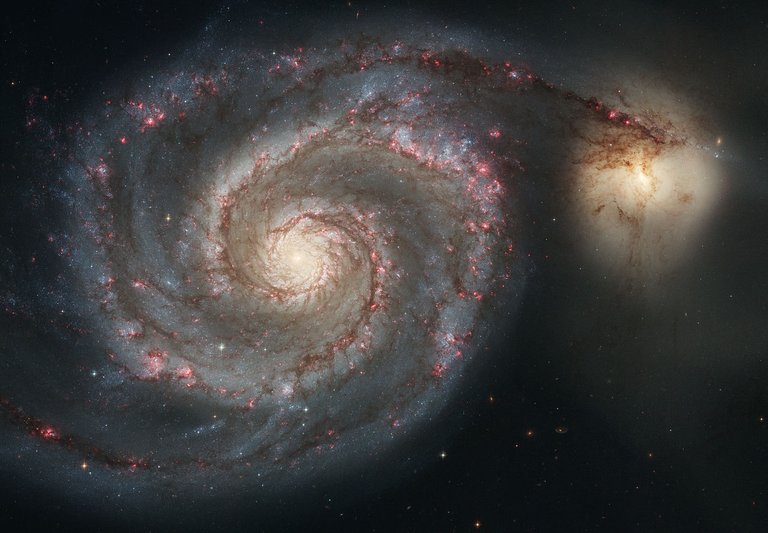
The Whirlpool Galaxy merging with another Galaxy NGC 5195
1 star formed per year
On average 3 stars are formed in our Galaxy every year. Since I was born there have been over 100 stars formed (in our Galaxy). Some stars are bigger than our star, so in some years one massive start might have formed instead. (The formula which predicts this works out how much dust and gas is likely to turn into a star.) For technically minded people, here's a nice diagram.
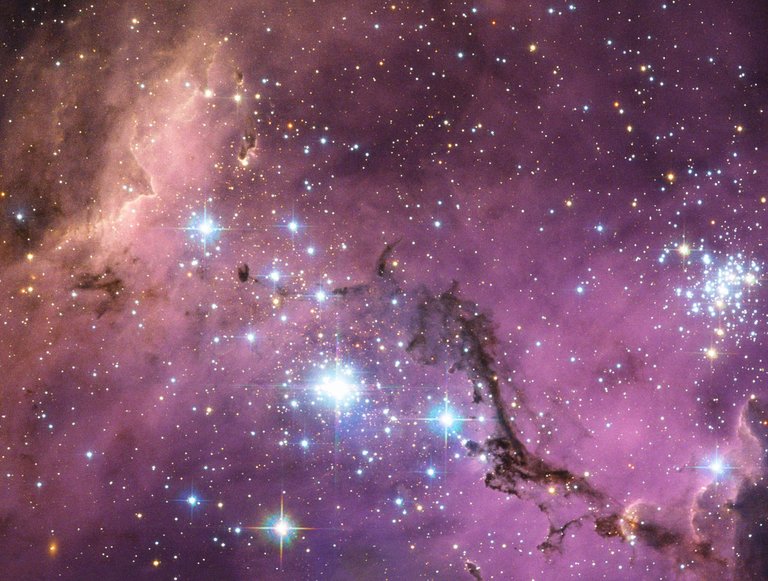
The Large Magellanic is part of an active star forming network of gas clouds within our own Galaxy. It's like a cosmic womb where stars emerge.
Our Star is an Average Star
Our star is very average, which is no bad thing. There are many other main sequence stars just like our own. They are of a medium size and burn at a nice comfortable temperature for billions of years. (lucky for us.) We are the living proof that they are the ideal home for (kind of) intelligent life to develop. If you look at the graph there are not as many Red Giants and not as many White Dwarfs. Red Giants were / are instrumental in making the heavier elements so it's not that they're useless but they woudn't be the best places to settle down. Recent observations and the increasingly common discovery of distant exoplanets suggest that stars are likely to have at least one planet and because Main Sequence stars such as our own are very common, there's a high chance that many Earth like planets exist too. How cool is that, not too cool though. ( see what I did there ?) After all Earth is just left over material from the formation of the Sun. The giant gas planets are too. In my mind, most solar systems will likely have a similar composition. it's like organs in a body. Earth is the brain and the sun is our heart. the gas planets are like our digestive organs, liver, kidneys and spleen, filtering out the deadly influx, protecting the inner planets. I'm not sure what Venus and Mercury represent. Backups ? They're far too hot for (our kind) of life to exist but perhaps under the steaming clouds of Venus, something enjoys balmy holidays ? I feel sorry for Mars. It may have some life there but it looks like a little dried up version of Earth. We're more likely to end up like Venus with a boiling hot atmosphere if we don't stop burning stuff. A runaway greenhouse effect would be a sad end to life on Earth !
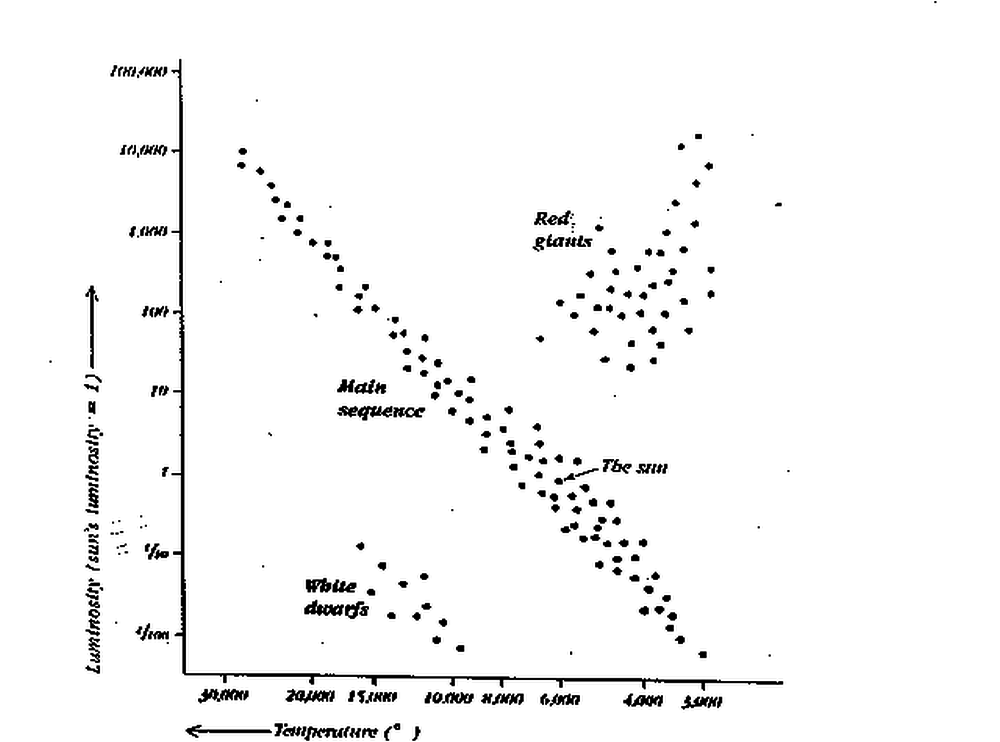
50 billion Galaxies
it is thought that there are about 50,000,000,000 galaxies in our Universe. I reckon that figure will increase over time as we understand more about the Universe. As it stands, it means about 150billion stars form in the Universe every year. Just think, out there are planetary disks of playdoh just waiting to cool down and aggregate into new earth like planets. In a couple of billion years perhaps life will emerge / drift in and sprout like us. With in another couple of billion years, a tentacled or boned creature may be discovering for the first time the joys of BlockChain social media. Which makes me wonder... how many species are there in the Universe? how many lives are being lived right now ? if we could put ourselves on a technical scale relative to everyone else, would we even score 1 out of 100 ? who knows?
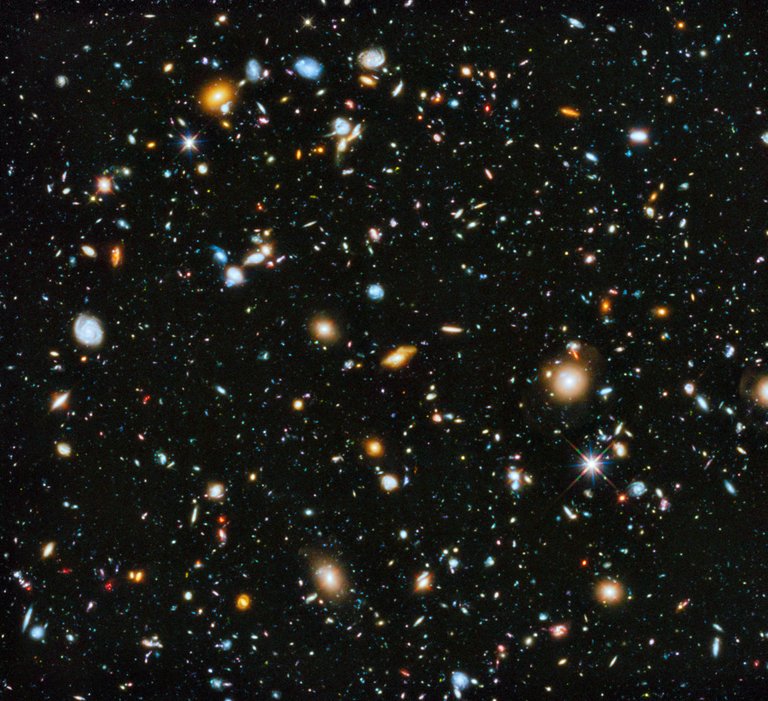
- The Hubble Deep Field image of distant galaxies is perhaps one of the most significant image ever made. A postage stamp sized area of space at arms length photographed by Hubble over many, many hours revealed a wealth of Galaxies on the other side of the Universe. Staggering, beautiful and hauntingly comforting. I always imagine what the picture would look like if we took it in 360 degrees. No doubt we would be surrounded on all sides by the same image and it would be overwhelmingly incredible to see it !
Perhaps we're Smarter than we think.
Perhaps we're not as dumb as we think. We might not have mastered inter-dimensional trave, (that's another post entirely) but we do have some cool stuff we invented. I reckon music is a universal feature of life, because it's mathematical and maths is a discovery we made, not an invention. It does need a nice atmosphere with sufficient air to be able to hear it though. Jazz is probably popular in many places throughout the Galaxy because it's a very cerebral form of music and it almost becomes inevitable if you study music long enough. ( Entirely my own opinion) but I'm sure John Coltrane would have backed me up on that one.
How many cryptocurrencies are there currently in existence throughout the Universe and what's their market cap ? Is money just a symbol of a primitive technical society? Would advanced beings even use a barter system? I think not. They'd probably have enough knowledge not to need anything from anyone. Perhaps it will always be difficult to imagine how non-human culture looks and feels. I also think that many of our interstellar and intergalactic neighbours will no doubt share at least some our qualities and interests. Humour, family a love of food and gadgets. All seem to be the basic tools of survival. Sadly perhaps, missiles, war, hunger and inequality will be out there too. How many starving children are there in our Galaxy? Perhaps many or none at all.
To End this post I'd like to Blow Your Mind
This final image in this post is of the structure of the Universe. It's not a photograph but the outcome of a computer generated simulation; The Millennium Simulation. For me, this is actually the most significant image of anything yet produced by humanity. It looks like a network of life close up. Cells or intriguingly, a massive nerve cell network (a GIANT brain). We can see how everything in the Universe is connected. It looks like this for billions of light years in every direction. Imagine it in 3D. The structures or filaments in this image are made of galaxies, millions and millions of them. What's terrifying is the VOID between them. Seemingly nothing for many light years. Absolutely no matter. Intergalactic space must be a really lonely place. I'm sure there's something in there, even if it's just dark matter and dark energy we can't see. Without dark matter, (or a better explanation for our Universe as we measure it) we don't really have a complete idea of how the Universe's structure is formed in the way we understand it today..I'm sure the Galaxy won't change much over the next 100 years but our understanding of the Universe will undoubtedly expand.
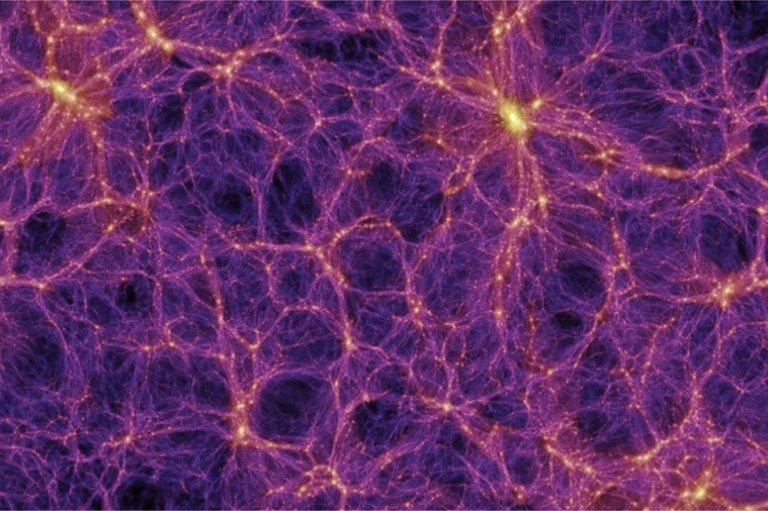
Let's Zoom out a Bit
It get's a bit tricky with advanced physics to measure distance across the Universe but that little marked section is about 6 billion light years across. When I first saw this image I couldn't help think that the Universe is just one huge meta-creature, (probably existing in it's own meta-environment,) invoking the multiverse. We're not even atoms, the stars are perfect metaphors for that, the galaxies mere molecules. we're more akin to sub atomic energetic strings of string theory, meta strings indeed. Perhaps this is what spiritual people feel. Maybe this is what our spiritual side connects to. Is this the mind of GOD we're looking at ? if it is, we're in it somewhere, like a dream. Who knows really ? (and I am only half joking.) I've always had a bit of a bone to pick with religion. I do have a spiritual side though and often felt like there's more to life and consciousness than we could possibly know. Perhaps one day we will understand our place in the Universe much better. I can't wait to meet that Vondazlian. Explaining Steemit might be quite tricky to a hyperdimensional, telepathic insectoid with an IQ of 326. I'm sure she'll understand my inner smile.


nice post.
Best work good hardworking post friend god bkess you
Great post, I like astronomy and also science fiction.
Its very informative and I'd like to know what Intergalactic crypto technology will be used then, will there be "Spacebook.com" and how much it'll cost in bitcoin to buy a bioengineered Mia Khalifa. 😁😂😁
Your Post Has Been Featured on @Resteemable!
Feature any Steemit post using resteemit.com!
How It Works:
1. Take Any Steemit URL
2. Erase
https://3. Type
reGet Featured Instantly – Featured Posts are voted every 2.4hrs
Join the Curation Team Here
Your Post Has Been Featured on @Resteemable!
Feature any Steemit post using resteemit.com!
How It Works:
1. Take Any Steemit URL
2. Erase
https://3. Type
reGet Featured Instantly – Featured Posts are voted every 2.4hrs
Join the Curation Team Here
Impressive stuff. You never cease to amaze.
Thanks Nicholas! It's nothing to do with me; thanks to our wonderful home, the Universe !